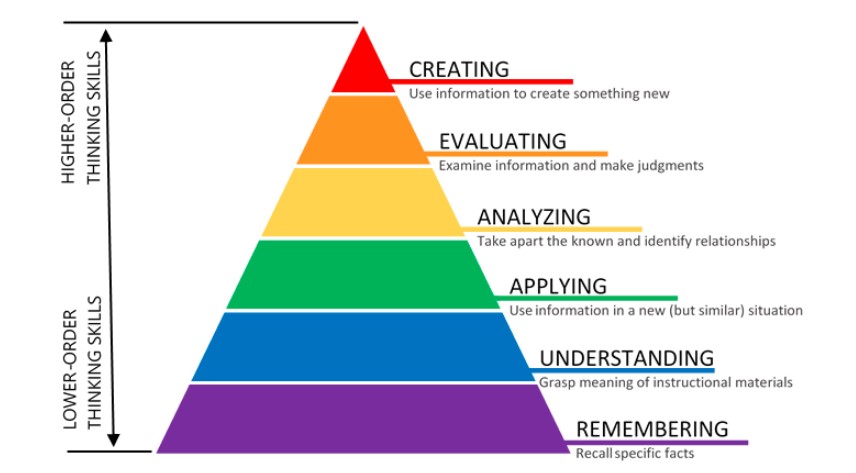Have you ever wondered why course objectives of the most effective courses seem very similar in their structure? For example, maybe you’ll see a course that says, “Define Compliance” or “Explain the Importance of Compliance Training.” It’s no accident that a course’s objectives are uniform and very clear. You can thank Bloom’s Taxonomy for that.
Another example:
“After the completion of reading this article, you will be able to:
- Define Bloom’s Taxonomy.
- Explain the dynamic learning levels in Bloom’s Taxonomy.
- Use Bloom’s Taxonomy in your everyday life and training.”
Bloom’s Taxonomy’s hierarchical classification helps educators teach to different learning levels. To visualize this system of classification, picture a pyramid similar to the food pyramid. In the food pyramid, the standard representation includes the number of servings for each basic food group you need in a day. Bloom’s Taxonomy requires six dynamic learning levels in its pyramid. These levels define the type of course objectives you must satisfy to reach training goals. These dynamic learning levels include:
Creating
- Create new ideas or original work.
- Examples of creating objectives include explain, design, categorize, summarize, and plan.
Evaluating
- Examine information and justify a stance or decision.
- Examples of evaluating objectives include argue, defend, predict, interpreting, and justify.
Analyzing
- Take apart the known information and draw connections among ideas and relationships.
- Examples of analyzing objectives include organize, compare, contrast, examine, question, experiment, illustrate, and test.
Applying
- Use the information in a similar or new situation.
- Examples of applying objectives include change, prepare, operate, produce, interpret, and solve.
Understanding
- Comprehend ideas or concepts of instructional materials.
- Examples of understanding objectives include describe, classify, identify, review, and locate.
Remembering
- Recall basic concepts and specific facts.
- Examples of remembering objectives include label, list, memorize, recognize, state, and select.

Based on the pyramid, the higher the learning level, the more thought and action are required. When creating these course objectives, an instructional designer has to make sure that they are measurable. A successful objective is one where the learner can perform the action described in the course objectives.
Even though Bloom’s Taxonomy may seem simple, it takes a well-seasoned instructional designer to use this in the most efficient way. But with some practice, anyone can understand and implement Bloom’s Taxonomy in everyday tasks.
Our instructional designers create proven and engaging eLearns using a variety of educational models and strategies. Contact us to find out how you can hire our team for your training needs!
Related Blogs
Instructional Design and ADDIE: An Overview
Applying the Flipped Classroom in Enterprise Learning
Top 3 Benefits of Using an LMS for the Organization of Training



